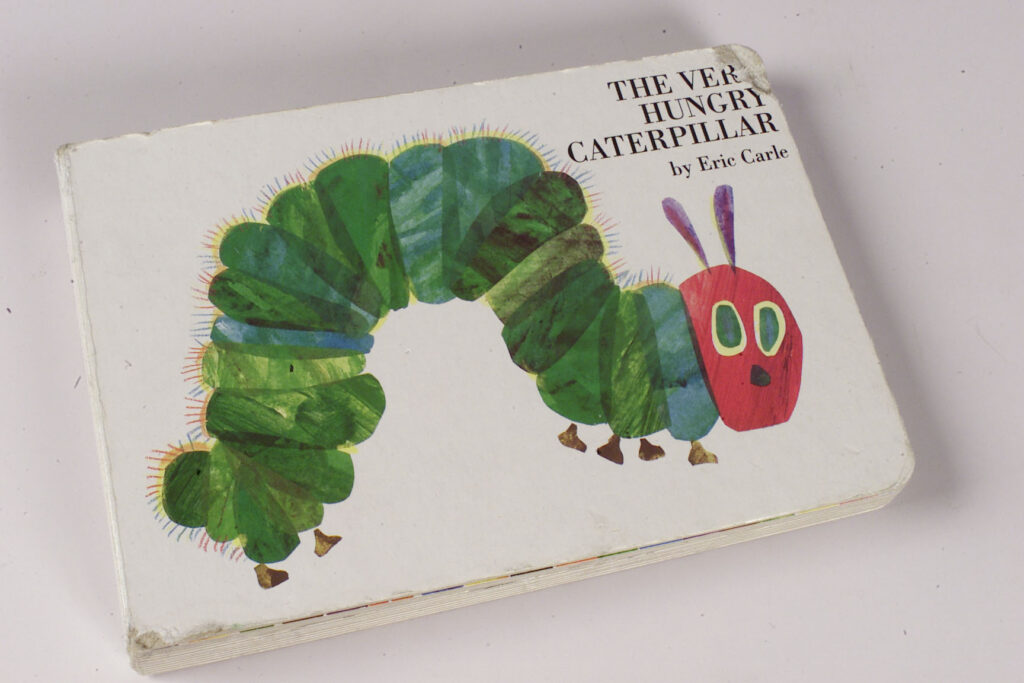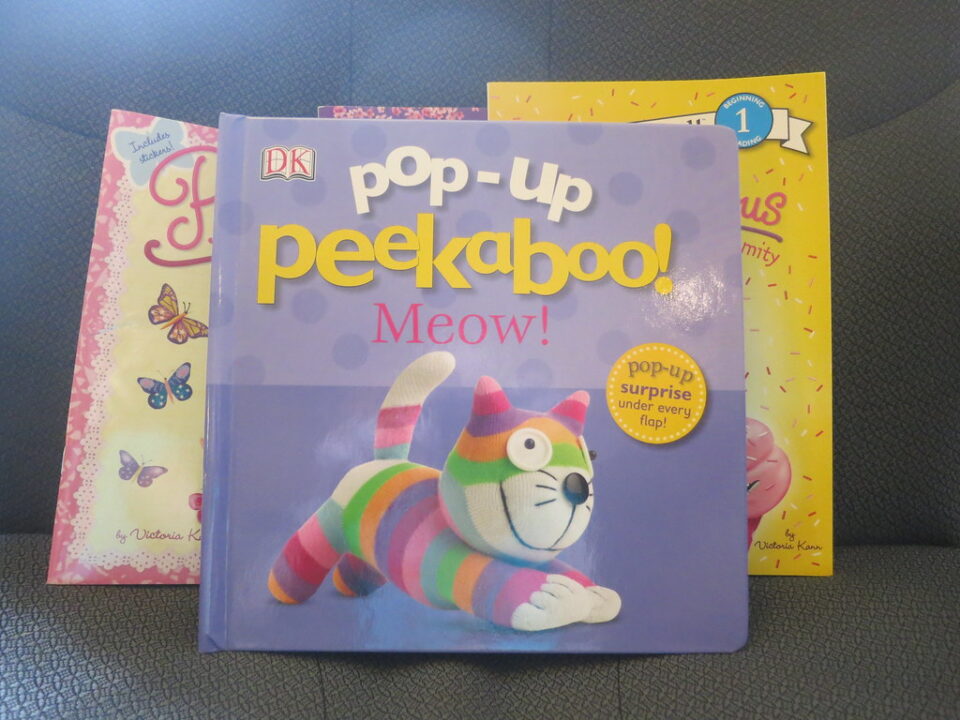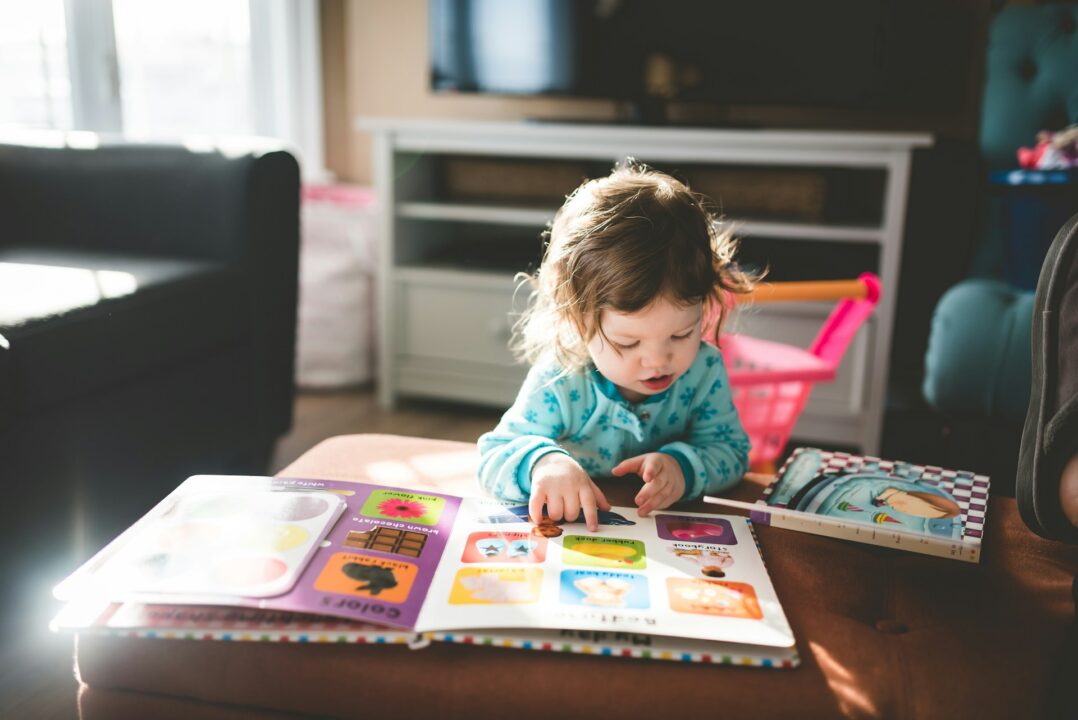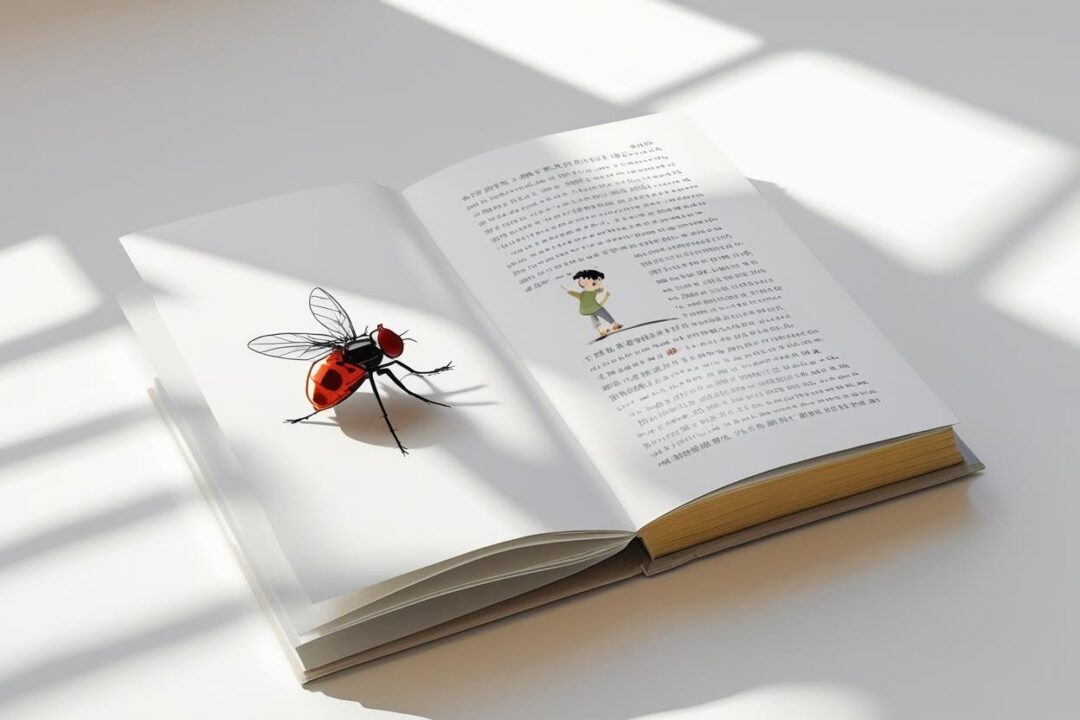Introducing the best baby books into your little one’s life is a magical way to cultivate early reading habits that can last a lifetime. With each page turned, babies and toddlers embark on a journey of discovery, laying the foundation for a love of reading. By engaging with stories, vibrant illustrations, and diverse themes, parents can nurture their children’s curiosity and cognitive development from the very start.
As we explore the enchanting world of baby books, we aim to answer the pressing question of how to select the books that will captivate and grow with your child. From interactive books to timeless tales, this guide will help you find your next read for your little one, ensuring that storytime is always a cherished part of the day and sparking a lifelong passion for books.
Top Picks for Infant Literacy
Books for babies are the stepping stones to literacy, designed to engage the youngest readers with vibrant colors, simple stories, and durable designs. Board books, in particular, are perfect for withstanding the curious hands and mouths of infants, making them ideal first books that can survive the exploration phase.
Our list of top picks for infant literacy offers a range of sturdy, stimulating reads. These books not only entertain but also introduce basic concepts through repetition and rhyme.
With these carefully chosen titles, you’ll find the perfect foundation for your baby’s early literacy journey.
1. Board Books – Sturdy Reads for Little Hands
Board books are the quintessential first books for babies, designed to endure the rigors of use by little hands. The thick pages are easy for tiny fingers to turn and are resistant to the occasional nibble or drool, ensuring that these books can be enjoyed over and over again.
The durability of board books makes them a practical choice for parents and a safe option for babies who are just beginning to explore the world through touch, taste, and sight. Featuring bold graphics and simple, rhythmic text, board books offer a multisensory experience that can help in developing a baby’s visual and language skills.
• “The Very Hungry Caterpillar” – A Timeless Classic by Eric Carle

Eric Carle’s “The Very Hungry Caterpillar” has delighted generations of children with its vibrant collage illustrations and the simple, yet captivating story of a caterpillar’s transformation into a butterfly.
The book’s unique design, with its die-cut pages and interactive elements, invites little ones to follow along as the caterpillar eats its way through an array of foods before cocooning itself and emerging as a beautiful butterfly.
The repetitive and rhythmic language used by Eric Carle not only makes the narrative engaging but also reinforces language development and counting skills. This classic tale is a staple in the realm of children’s literature, making it an essential addition to any infant’s library.
Its timeless nature ensures it remains one of the best children’s books ever, sparking a sense of wonder and a love for nature. Carle’s signature artistic style, blending hand-painted papers into bold and colorful images, captures the attention of babies and toddlers alike.
His ability to create a narrative that is both educational and enchanting is a testament to his skill as a storyteller and illustrator. “The Very Hungry Caterpillar” is more than just a story; it’s an experience that encourages interaction and imagination.
With over 50 million copies sold worldwide, Eric Carle’s masterpiece continues to be a must-have for young readers. It’s a book that parents and children can bond over, with its gentle introduction to the lifecycle of a butterfly and its celebration of growth and change, making it a book that will be treasured for years to come.
2. Interactive Books – Touch and Feel Experiences
Interactive books for babies are designed to captivate and stimulate the senses, offering touch and feel experiences that are fundamental to a child’s development. These books often incorporate various textures, flaps, and movable parts to encourage babies and toddlers to engage directly with the story, making reading a hands-on activity that supports fine motor skills and sensory exploration.
Touch and feel books are among the best books for fostering an interactive reading environment. They invite little ones to pet a soft bunny, feel the roughness of a dinosaur’s scales, or lift a flap to discover what’s hiding behind.
These tactile experiences are not only enjoyable but also aid in reinforcing language concepts and expanding a child’s vocabulary. Baby books that embrace interactivity are essential tools for parents seeking to immerse their children in an enriching reading experience.
From books for toddlers that introduce basic concepts to stories that simply delight with their playful elements, interactive books are a cornerstone of a well-rounded early literacy program, paving the way for a deeper appreciation of books and learning.
• Pop-Up Peekaboo – Surprise Elements for Babies

One of the most enchanting aspects of baby books is the element of surprise that pop-up features can provide. “Pop-Up Peekaboo” books are an excellent example of how interactive elements can enhance the reading experience for babies and toddlers.
Each page turn reveals a new pop-up surprise, encouraging anticipation and joy as little ones guess what might jump out next. These books not only entertain but also teach important concepts such as object permanence and cause-and-effect.
The playful nature of “Pop-Up Peekaboo” books makes them a hit among the youngest readers, as they eagerly engage with each pop-up character or object. The surprise elements foster a sense of wonder and excitement about reading, laying the groundwork for a lifelong love of books.
Among the best in this category are titles like “Pop-Up Peekaboo: Farm” and “Pop-Up Peekaboo: Colors,” which combine the thrill of pop-up surprises with educational themes. As babies and toddlers lift flaps and discover hidden animals or objects, they are not only entertained but also learning to recognize and name different elements of their world.
Including at least a couple of these pop-up gems in your baby’s first library can make reading time an eagerly anticipated part of the day. The interactive play that comes with “Pop-Up Peekaboo” books ensures that babies are actively participating in the story, making them a wonderful addition to the collection of baby books that support early literacy and developmental milestones.
Essential Categories of Baby Books
As we explore the world of baby books, it’s important to recognize the essential categories that support the developmental stages of young readers. Interactive books, for example, captivate babies and toddlers with their multi-sensory elements, while books for toddlers introduce key concepts in a fun, accessible way.
These categories are vital for building a diverse, stimulating library that nurtures a child’s growth and fosters a love for reading. Some of the best books for little ones fit into these categories, with beloved authors like Sandra Boynton captivating young minds with charming rhymes and whimsical illustrations. Platforms like BookScouter make it easy to find the best prices on her books, helping parents build a baby library without stretching their budget.
Meanwhile, timeless classics like “Where the Sidewalk Ends” and the stories of Robert Munsch create imaginative worlds filled with humor and heart. These beloved stories resonate with children and adults alike.
Each category of baby books serves a special purpose, from sparking laughter with playful tales to soothing little ones with gentle bedtime stories. They are the building blocks of literacy, offering endless opportunities for learning and bonding. When caregivers curate a collection of these books, they create a treasure trove that educates, entertains, and sets the stage for a lifetime of literary exploration.
3. Educational Themes – Learning Made Fun
The best books for babies and toddlers often incorporate educational themes that make learning an enjoyable and integral part of reading. These books skillfully weave lessons on counting, the alphabet, and basic concepts into engaging narratives and interactive elements.
As young minds are naturally curious, books that introduce foundational skills in a playful manner are key in fostering a positive attitude towards learning. With colorful illustrations and catchy phrases, educational books capture the imagination of little ones while subtly teaching them new skills.
From counting books that number fluffy animals to ABC books that journey through the alphabet with whimsical characters, these stories make every reading session both fun and informative. This blend of entertainment and education is what makes these books stand out as excellent tools for early development.
As children grow, educational books for toddlers continue to play an important role in their learning journey. These books become more sophisticated, introducing more complex concepts and stories that challenge young readers to expand their understanding of the world around them.
By making learning fun, these books lay the groundwork for a lifetime of curiosity and a genuine love of reading, ensuring that each new discovery is met with enthusiasm and joy.
• Counting and ABCs – Foundational Skills for Toddlers

Books for toddlers that focus on counting and ABCs lay a critical foundation for early literacy and numeracy. “Chicka Chicka Boom Boom” by Bill Martin Jr. and John Archambault is an engaging alphabet adventure that toddlers enjoy as letters climb up a coconut tree.
Another excellent choice is “10 Little Rubber Ducks” by Eric Carle, which combines learning to count with a tale of rubber ducks adrift at sea. Both books offer vibrant illustrations and rhythmic text that capture a child’s attention while teaching those fundamental skills.
Carle’s distinctive collage art in “10 Little Rubber Ducks” not only introduces numbers but also opens up discussions about animals and their habitats. Meanwhile, the playful antics of the letters in “Chicka Chicka Boom Boom” turn the abstract concept of the alphabet into a memorable story.
These books are not just tools for learning; they are invitations to the joys of reading, setting the stage for a lifelong love of books. Introducing toddlers to books that feature numbers and letters through storytelling ensures that the learning process is fun and engaging.
By reading these books repeatedly, parents can reinforce the concepts and help their toddlers make the connection between the symbols on the pages and the spoken words.
Moreover, these books serve as a great bonding opportunity, as parents can animate their reading with playful voices and encourage their toddlers to mimic the sounds of the letters and numbers. This interaction is crucial for developing speech and comprehension abilities at a young age, paving the way for more advanced reading skills.
4. Bedtime Stories – Soothing Tales for Sleepy Times
Soothing bedtime stories are a cherished nightly ritual for many families. They not only help calm toddlers before sleep but also strengthen their love for books. “Goodnight Moon” by Margaret Wise Brown is a gentle classic that lulls children with its quiet poetry and soft illustrations, as everything in the “great green room” is bid goodnight.
Another heartwarming choice is “The Going to Bed Book” by Sandra Boynton, which depicts an adorable group of animals as they prepare for bed, making it a relatable and comforting read for little ones.
These stories are designed with the understanding that the rhythm and tone of a book can greatly influence a child’s transition to sleep. The rhythmic cadence of “Goodnight Moon” and the humorous, soothing narrative of “The Going to Bed Book” both serve to create a peaceful environment conducive to sleep.
By incorporating these bedtime stories into the nightly routine, parents can provide a sense of security and continuity for their toddlers. The familiar words and images become signals that it is time to wind down, making bedtime a smoother experience for both parent and child.
• Gentle Goodnights – Books to End the Day

As the day draws to a close, books that weave stories of calm and comfort are essential in guiding toddlers toward a peaceful night’s sleep. “Goodnight, Goodnight, Construction Site” by Sherri Duskey Rinker and Tom Lichtenheld offers a unique twist on bedtime by putting hardworking construction vehicles to rest, one by one.
For lovers of nature, “Time for Bed” by Mem Fox is a lyrical choice, with soothing verses about various animals getting ready to sleep, matched with beautiful illustrations that captivate and calm.
These books not only help establish a bedtime routine but also foster an emotional connection between the child and the world depicted within the pages. As each construction vehicle or animal settles down, the child is also gently encouraged to relax and prepare for their own restful slumber.
The melodic language and tender depictions in these stories are ideal for easing the transition from the bustling energy of day to the tranquil quiet of night. Parents can use these books as tools to signal that the time for play has ended and the time for rest has begun, creating a nurturing bedtime atmosphere.
Moreover, “Goodnight, Goodnight, Construction Site” and “Time for Bed” are books that children ask for repeatedly, their repetitive and predictable text providing the comfort of familiarity. This repetition is not only soothing but also reinforces language patterns and vocabulary, an added educational benefit to the bedtime ritual.
Age-Specific Recommendations
A curated selection of books can offer a gentle introduction to reading for each developmental stage. For newborns, sensory-rich books with simple images and rhythmic text are ideal. Books such as “Brown Bear, Brown Bear, What Do You See?” by Bill Martin Jr. and Eric Carle, and “Goodnight Gorilla” by Peggy Rathmann, captivate with their bold, colorful illustrations and simple, repetitive phrases that newborns can absorb and enjoy.
These books also introduce basic concepts like colors and animals, fostering early cognitive development. The engaging patterns and clear, contrasting colors in “Brown Bear, Brown Bear, What Do You See?” are particularly suited for the visual capabilities of newborns. “Goodnight Gorilla,” with its gentle humor and charming story, invites parents to add their own narrative flair, making the reading experience lively and interactive.
As children grow, books that offer a bit more complexity and interactivity become appropriate. “Pat the Bunny” by Dorothy Kunhardt is a classic touch-and-feel book that encourages babies to interact with the text through tactile exploration. Similarly, “Where’s Spot?” by Eric Hill is a delightful lift-the-flap book that adds the element of surprise and supports object permanence development.
These books are designed to be more than just read; they are meant to be experienced. They engage multiple senses and support the development of fine motor skills as children turn pages, lift flaps, and feel different textures. This hands-on approach to reading builds a foundation for active engagement with books as the child grows older.
5. Best Books for Newborns – Gentle Introduction to Reading
Introducing newborns to the world of literature can be a magical experience. “Goodnight Moon” by Margaret Wise Brown is a quintessential starter book, with its calming narrative and familiar nighttime routine. Another beloved choice is “The Very Hungry Caterpillar” by Eric Carle, which combines the days of the week with a butterfly’s life cycle, all presented in Carle’s distinctive collage illustrations.
Books like “Goodnight Moon” and “The Very Hungry Caterpillar” provide gentle stimulation that aligns with a newborn’s developing senses. The rhythmic and repetitive text of these books is soothing to a baby’s ears, and the bright, bold illustrations help to capture and hold their visual attention. Reading these stories aloud to newborns introduces them early to the sound of language and the concept of storytelling.
These selections also serve as a tool for bonding between parent and child. The act of reading allows for intimate moments of closeness, as newborns listen to their parents’ voices and feel the warmth of their embrace. Such early experiences with books lay the groundwork for emotional and educational growth.
Incorporating these classic stories into daily routines can help create a love for reading that will last a lifetime. The familiarity of the stories and their comforting themes make them perfect for repeated readings, each time fostering a deeper connection between the newborn and the world of books.
• Books for 1-Year-Olds – Engaging Content for Growing Minds
As children reach their first year, their books should reflect their expanding world and growing curiosity. “First 100 Words” by Roger Priddy provides a comprehensive array of everyday items and concepts, paired with bright photographs that catch the eye of a one-year-old.
ABC books like “Dr. Seuss’s ABC: An Amazing Alphabet Book!” introduce the alphabet in a fun and whimsical manner, with playful rhymes and alliterative phrases that toddlers find amusing and memorable.
These books serve as fundamental tools for language development, with “First 100 Words” offering a visual dictionary of sorts that helps toddlers connect images with words. ABC books create an enjoyable learning environment that encourages toddlers to repeat sounds and begin recognizing letter shapes, setting the stage for early reading skills.
Bedtime stories remain an important part of the bookshelf for one-year-olds as well. Titles such as “Llama Llama Red Pajama” by Anna Dewdney bring comfort with their relatable storylines and familiar characters, making the end of the day a time for cozy reading.
The interactivity and educational content of books for one-year-olds are crucial for keeping their attention and fostering a positive attitude toward reading. These books not only entertain but also educate, laying a foundation for lifelong learning and a passion for stories.
Budget-Friendly Options for Parents
For parents who cherish the joy of reading but are mindful of their budget, there are many ways to provide enriching literary experiences for their babies without breaking the bank. Thrift stores and second-hand bookshops often offer a hidden treasure trove of children’s books at a fraction of the cost.
Online platforms also provide discounted prices and even free e-book versions of popular classics that can be read on tablets or smartphones. Libraries are another invaluable resource, offering not only a chance to borrow books but also to attend storytime sessions, providing both a social experience for children and a way for parents to discover which books their little ones truly love.
To make the most of every dollar, parents can use price comparison websites like DirectTextbook to find the best deals on new and used children’s books across multiple online retailers. These tools help stretch your budget further without sacrificing quality or variety.
When building a baby’s first library, parents should look for sales, promotions like ‘Buy One, Get One Free,’ and seasonal discounts, especially during holiday seasons.
Subscribing to newsletters is another way to stay updated on upcoming deals and exclusive offers. Joining a book club or attending book events can also provide opportunities to exchange books with fellow parents, expanding your collection without spending extra.
For more practical tips on how to buy gently used children’s books online, visit this helpful guide.
Investing in timeless classics, such as “Goodnight Moon” and “The Very Hungry Caterpillar”, which are adored by generations, is another savvy way to build a lasting library. These beloved stories are often available at discounted prices, making them an affordable and wise choice for any nursery shelf.
By combining these strategies, parents can nurture their child’s love for reading while keeping costs in check.
6. Affordable Classics – Must-Have Books Without Breaking the Bank
Classic baby books are the cornerstone of early childhood literacy, and thankfully, many of these timeless stories are available at budget-friendly prices. “Goodnight Moon” by Margaret Wise Brown is a quintessential goodnight book that has lulled millions of children to sleep with its calming prose and gentle illustrations.
Another economical must-have is “Chicka Chicka Boom Boom” by Bill Martin Jr. and John Archambault, a rhythmic alphabet adventure that delights babies with its bold colors and catchy beat.
These classics are not only affordable but also widely available in various formats. Parents can find board book editions, which are typically less expensive than hardcover versions, at their local bookstores or online.
For additional savings, keep an eye out for box sets that include several books by the same author or within the same series. These sets often come at a reduced price per book, enabling parents to quickly build a diverse library for their child.
Another tip for economical book shopping is to attend library sales or community book swaps. Often, libraries will sell off older copies of popular books to make room for new ones, and these sales can be a goldmine for finding your next read for your baby’s collection.
Baby showers are also an excellent opportunity to build a baby’s library. Instead of toys that children quickly outgrow, encourage guests to bring a beloved book that they can inscribe with a personal message, creating a sentimental and valuable addition to the baby’s reading repertoire.
• Buy One, Get One 50% Off Deals – Building a Library on a Budget
One of the most cost-effective strategies for expanding a baby’s bookshelf is to take advantage of ‘Buy One, Get One 50% Off’ deals often offered by retailers. This type of promotion allows parents to purchase a new book at full price while getting a second for half the cost, effectively reducing the overall expense.
Retailers such as Barnes & Noble frequently run these promotions, especially during back-to-school seasons or major holidays, making it an ideal time to stock up on children’s books.
When planning to utilize these deals, it’s beneficial to have a list of desired titles ready. This ensures that parents can quickly find books that are suitable for their baby’s age and interests.
For example, “Wheels on the Bus” is an engaging sing-along book that captures the attention of little ones with its moving parts and familiar tune, making it an excellent choice for a buy-one-get-one offer. Pairing such an interactive book with a more serene bedtime story creates a balanced collection for different moments of the day.
Additionally, it’s smart to combine these deals with other discounts such as store memberships, reward programs, or birthday club offers that bookstores offer. Signing up for email alerts from publishers can also lead to exclusive discounts and insider information on when the next big sale might occur. By staying informed and planning purchases around these promotions, parents can significantly stretch their book-buying budget.
Format and Durability Considerations

When selecting books for babies, the format and durability are just as important as the content. Babies and toddlers explore the world with their hands and mouths, making it essential to choose books that can withstand this exploration.
Board books, with their thick cardboard pages, are designed to endure the drool, bites, and bends that are inevitable with young readers. They’re also easier for little fingers to manage, allowing babies to turn pages and practice fine motor skills without tearing paper.
Board books come in a variety of sizes, from small and portable to larger editions that make for easier sharing during a storytime session. The compact size of many board books also makes them ideal for on-the-go entertainment, fitting easily into diaper bags and strollers. Retailers and publishers understand the needs of young families, often releasing popular book genres like animal stories, fairy tales, and educational themes in this durable format.
When considering the cost of building a baby’s first book collection, board books often come with a lower price tag than their hardcover or paperback counterparts. This affordability, paired with their resilience, makes them a smart investment for parents.
They’re also frequently available in sets or bundles, which can further reduce the overall cost per book. For those interested in sustainability, many board books are now made with recycled materials, appealing to eco-conscious parents who want to make environmentally friendly choices.
Moreover, the format of a book can significantly impact a child’s interaction with reading material. Board books tend to lie open on their own, making it easier for babies to engage with the pictures and text without the frustration of pages flipping shut. This design encourages independent exploration and can foster an early love for books, setting the stage for a lifelong appreciation of reading.
Board Book Editions – Durable Pages for Eager Explorers
When it comes to baby books, board book editions are a perfect match for young readers who are just beginning to engage with literature. Their sturdy pages can survive rough handling and even the occasional chewing, making them an ideal choice for infants and toddlers.
Popular book genres for this age group, such as counting, ABCs, and simple stories, are often available in board book format, combining durability with educational value. Many beloved children’s book authors and illustrators prioritize the release of their stories in board book editions to cater to the youngest of readers.
For example, books with tactile elements, like different fabrics or embedded puzzles, are frequently found in board book form, enhancing the sensory experience for babies as they read. This interactivity not only entertains them but also aids in their cognitive development.
For parents, the convenience of cleaning is another benefit of board books. They can typically be wiped down with a damp cloth, a necessary feature for items that will inevitably be handled by sticky fingers.
This ease of maintenance ensures that board books remain a hygienic choice for shared reading environments such as playgroups or daycare centers. By choosing board books, parents can provide a safe and robust option for their child’s early reading experiences.
• Why a Board Book Is Essential for Babies
Introducing babies to reading with board books is essential for a multitude of reasons. The sturdy construction of board books is designed to withstand the curious and sometimes rough exploration of babies, making them a practical choice for this age group.
As infants and toddlers often engage with their environment through touch and taste, board books are built to endure being handled, bent, and even bitten without significant damage, ensuring they last through multiple readings.
Board books also contribute to a baby’s developmental milestones. The act of turning thick, cardboard pages helps improve fine motor skills, while the bright illustrations and simple text support cognitive development by teaching concepts such as object permanence, cause and effect, and language skills.
As babies grow, these books can serve as tools for them to begin identifying pictures and words, setting the foundation for early literacy and a love for reading. From a safety standpoint, board books are manufactured with rounded corners and non-toxic materials, reducing the risk of injury or harm.
This peace of mind allows parents to confidently encourage independent play and exploration with books, knowing their child is safe. The compact size of most board books is another advantage, as it fits comfortably in little hands, encouraging babies to handle and interact with the book on their own.
Lastly, board books are often more accessible in terms of cost and availability. They are a budget-friendly option for families, as many classic and modern titles are available in this format.
In addition to bookstores and libraries, board books can be found at garage sales, second-hand shops, and online retailers, making them an easy addition to any home library. By starting with board books, parents can instill a lifelong passion for reading from the earliest stages of their child’s life.
Diverse and Inclusive Reads

Creating a world of diverse and inclusive reads starts with the earliest books that children encounter. By introducing babies to a broad spectrum of characters, cultures, and stories, parents and educators can foster an appreciation for diversity from the very beginning.
It’s crucial to select books that not only entertain but also represent a wide array of experiences and backgrounds. This allows children to see themselves reflected in the stories they hear and builds empathy for others’ experiences.
Authors and illustrators are increasingly mindful of the importance of diversity in children’s literature. From classic tales reimagined to showcase multicultural characters to original stories that celebrate differences, the market is rich with options. Books that depict various family structures, languages, and traditions are not only important for children from those backgrounds but are also essential for all children to understand and embrace the diversity of the world around them.
Publishers are also recognizing the need for inclusivity and are responding with books that cater to a wide audience. From publisher news highlighting new diverse releases to book events that focus on multicultural authors, the literary world is making strides toward inclusivity. Parents looking to find their next read for their little ones now have an abundance of choices that break the mold of traditional children’s literature.
When selecting diverse books for babies, it’s beneficial to consider a mix of popular book genres, from fiction to non-fiction, and even educational themes. Seeking out titles by popular authors known for their inclusive works can also be a rewarding experience. These reads not only serve as a mirror for some children but also as windows for others, offering perspectives that might be different from their own.
Conclusion
This guide has also underscored the significance of diverse and inclusive reads, offering a range of characters and stories to reflect the broad spectrum of society. Recommendations from experts like Janssen Bradshaw have provided a trusted resource for finding inclusive picture books.
As Margaret Wise has beautifully demonstrated through her timeless tales, books possess the power to comfort, educate, and inspire. By carefully selecting the best baby books, we can foster a lifelong love of reading that will flourish well beyond these early years. And as we continue to review, recommend, and revel in the world of books, may you always find your next read to share with the littlest readers in your life.




